
During WW2 the Auschwitz concentration camp located in the occupied town of Oświęcim in Poland, was a Nazi state funded complex of over 40 camps. The main camps were: the main camp of Auschwitz I (concentration camp) (in German Stammlager) Auschwitz II - Birkenau (concentration and extermination camp which several gas chambers) and Auschwitz III - Monowitz or Buna (a labor camp) created to staff factories for the chemical conglomerate IG Farben. The camps became the major site of the Nazis' Final Solution to the Jewish Question and played a key role in the Holocaust also known as the Shoah, the genocide of the European Jews during WW2.
"For evil to flourish, it only requires good men to do nothing".
Simon Wiesenthal
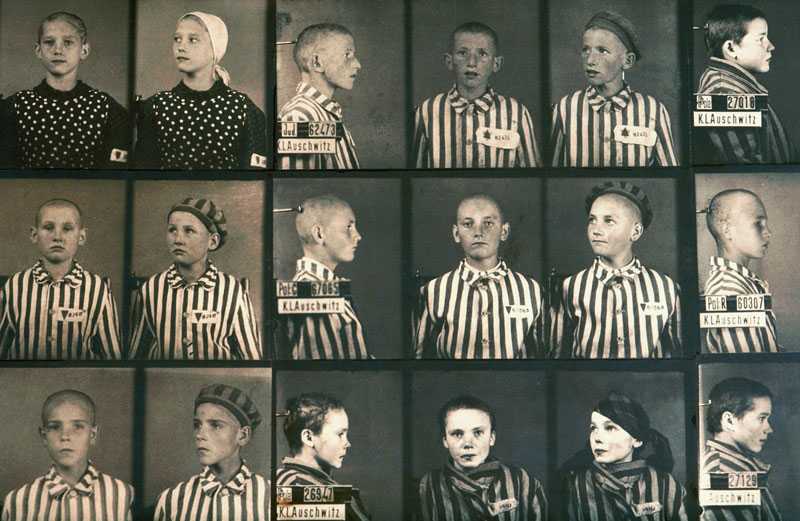
Countless of prisoners were photographed
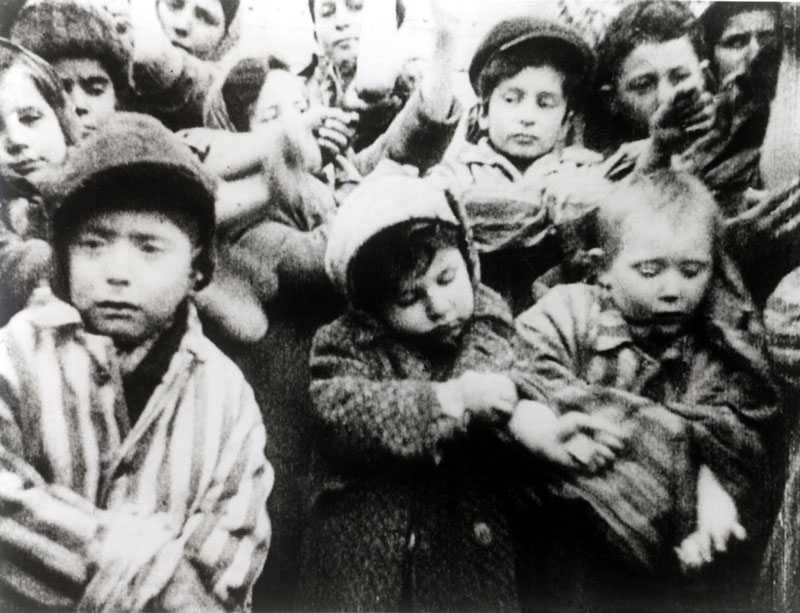
Children showing their tattoos after liberation in 1945

The selection process at the arrival of the transports

A German doctor decided if a prisoner was to live or was instantly gassed.

Inmated were shaved and tattooed

Sad scenes during the liberation by the Red Army.

Children behind the fences

Innocent people..
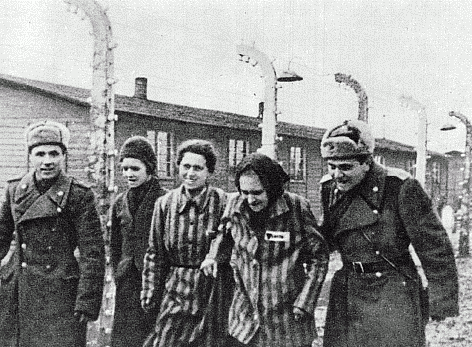
Liberated
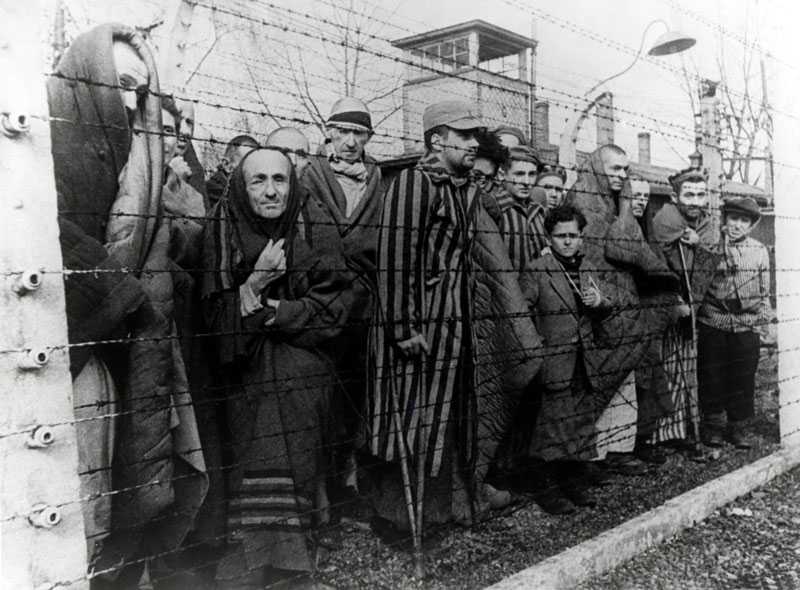
Behind barbed wire

The infamous gate at Auschwitz 1
- Countless of prisoners were photographed
- Children showing their tattoos after liberation in 1945
- The selection process at the arrival of the transports
- A German doctor decided if a prisoner was to live or was instantly gassed.
- Inmated were shaved and tattooed
- Sad scenes during the liberation by the Red Army.
- Children behind the fences
- Innocent people..
- Liberated
- Behind barbed wire
- The infamous gate at Auschwitz 1
History, definition and facts about Auschwitz
Main history of Auschwitz
The direct reason for the establishment of the Auschwitz was the fact that, after the Germany invasion of Poland on September 1st, 1939, the arrests of Polish people who were considered 'enemies of the Reich', increased dramatically leaving the local prisons to become quickly overcrowded. Auschwitz was initially intended to be a temporary detention center for political prisoners where deported to German concentration camps such as Dachau and Sachsenhausen in Germany. The SS temporarily closed the Dachau Concentration Camp near Münich in Germany, because the SS needed a training facility for newly formed units. The arrested Poles were left to wait in Poland, as no one knew when they would be transferred to Germany.
Richard Glücks
In December 1939, Richard Glücks (SS Concentration Camp Inspector) raised an idea to Heinrich Himmler and Reinhard Heydrich, to establish a suitable site for a new concentration camp somewhere in the occupied Polish territory. In January 1940 Himmler decided that more concentration camps were needed in Germany and in the occupied territories of Eastern Europe. The fact the Oświęcim was chosen is quite simple, as there already existed an old cavalry and military complex, the Germans could use. So altering the camp to a concentration camp would be cheap.
The first prisoners arrived at Auschwitz on May 20, 1940
The first transport of 30 German 'cirminal' prisoners from Sachsenhausen, who were carefully selected by the SS, arrived on May 20, 1940. Their function was mainly to operate as Kapo's. Kapo's were prisoners in Nazi concentration camps who were selected by the SS, to supervise forced labor or carry out administrative tasks. The first 720 Polish 'political' prisoners reached KL Auschwitz from the Tarnów prison on June 14, 1940 to start the initial works at Auschwitz 1 as the camp needed expansion and a big barbed wire fence to accomodate the future prisoners. Though building materials such as barbed wire for the fences for example, were hard to come by.
Numbers of prisoners at Auschwitz increases
The Auschwitz camp initially a quarantine camp, was setup in the framework of the German concentration camps regulations which had an amount of 10.000 prisoners. Auschwitz evolved into a concentration camp. At the end of April 1940 Reichsführer-SS Heinrich Himmler, visiting Warsaw, said that is was necessary to initiate new ways of mass arrests of the Polish elite . Some of them would be executed instantly while the rest would be incarcerated. The Auschwitz camp would be expanded to accommodate up to 30.000 prisoners.
Auschwitz history can be divided into two periods
Initially from 1940 and the first deportation of Polish political prisoners on June 14th, 1940 to the Auschwitz camp, right up to the first months of 1942, it was exclusively a concentration camp. Which meant a place of slowly killing inmates by deliberately creating, inhuman conditions such as starvation.
Then from the first months of 1942 to October 1944, the camp continued to function as a concentration camp yet it evolved into the largest center for the immediate, mass killing of Jews brought to Auschwitz within the mindset of the "Final Solution" or the campaign to annihilate the entire Jewish population of Europe.
How many camps did Auschwitz have?
Basically Auschwitz had three camps that made up the main camp complex.
Auschwitz I 1or Stammlager
In operation from October 1941 to January, 1945
Function: Concentration camp
Auschwitz consisted of 22 prewar Polish Military brick barracks. The camp quickly expanded in both organizational ways and in space. For instance during the summer of 1944, Auschwitz covered some 40 square kilometers and had over 40 sub camps within a radius of several hundred kilometers. At that point in time, about 135 thousand people (105.000 registered prisoners and about 30.000 thousand unregistered) in the Auschwitz complex, which was 25% of all the people in the entire concentration camp system. The name Auschwitz (probably because Germans had a hard time pronouncing Oświęcim) was given to the camp, which was a state funded institution, run by the SS. With time, Auschwitz became the largest concentration camp ever founded by the Third Reich.
Auschwitz II or Auschwitz Birkenau
In operation from May 1940 to January 27, 1945
Function: Mostly extermination camp
Construction of Auschwitz II in the town of Brzezinka or (Birkenau in German) began in October 1941. Original plans said that the prisoners of war who would be imprisoned had to build the camp themselves. 10.000 Soviet POW's were brought in from the Neuhammer am Quais (now Świętoszów) POW camp, and for as is believed, also from Lamsdorf (now Łambinowice) for this purpose. Auschwitz - Birkenau was the largest of the more than 40 camps and sub-camps that made up the Auschwitz complex. During its three years of operation, it had a range of functions. When it opened in March 1942 it was a camp for 125.000 prisoners of war and served at the same time as a center for the extermination of the Jews. From 1942 until late 1944 cattle trains delivered around 1.3 million prisoners (mainly Jews) from all German occupied countries in Europe, to its gas chambers. The death toll includes 960.000 Jews (865.000 of whom were gassed on arrival), 74.000 non-Jewish Poles, 21.000 Roma, 15.000 Soviet prisoners of war, and up to 15.000 other Europeans. Around 1.1 million people died in Auschwitz.
Auschwitz III or Monowitz
In operation from October 1941 to January 1945
Function: Forced labor camp
Construction began on site in the village of Monowice or (Monowitz in German) in mid April 1941. The Monowitz camp was one of the first and also the largest of the sub-camps of Auschwitz. This additional labour camp was built with the tought in mind, that a manufacturing plant of I.G. Farben would be constructed near the location of the camp, so that its prisoners could be 'placed' at I.G. Farben's disposal.
IG Farben Industrie prepared the plans between February and April 1941 and bought the plot of land. The Poles living in the area were evicted and naturally not compensated. At the same time, the Jews (and some local Poles) were expelled from the city of Auschwitz and their homes were confiscated. These houses were sold to IG Farben, which used the houses to house workers. Eventually IG Farben agreed with the SS, that it would hire prisoners from Auschwitz I for the price of 3,5 Reichsmarks a day, which was of course very cheap. IG Farben's main factory, the one for making synthetic rubber for the Luftwaffe and the war industry, was operational from 1942 onwards.
The first of around 2.000 prisoners was brought to the camp from Auschwitz I at the end of October 1942. With this new group of forced labourers, the prisoner population rose to 6.000 in 1943 to almost 11.000 inmates in late summer of 1944. The prisoners lived in 59 wooden barracks and one made of concrete panels. Each barracks was furnished with 56 three tier bunkbeds, a few pieces of furniture and a central heating installation.
Despite slightly better living conditions than in Auschwitz - Birkenau, the strength of Monowitz prisoners dropped rapidly due to the hard labor. They died or fell ill and were therefore selected to selection as sick prisoners could not work as hard as healtyh inmates. Around 1.650 prisoners were murdered inside the camp or died in the camp hospital and 11.000 were sent back to Auschwitz and Birkenau where the majority of them were killed with a lethal injection of phenol in the heart or in the gas chambers.
Map of the area around the main Auschwitz camps
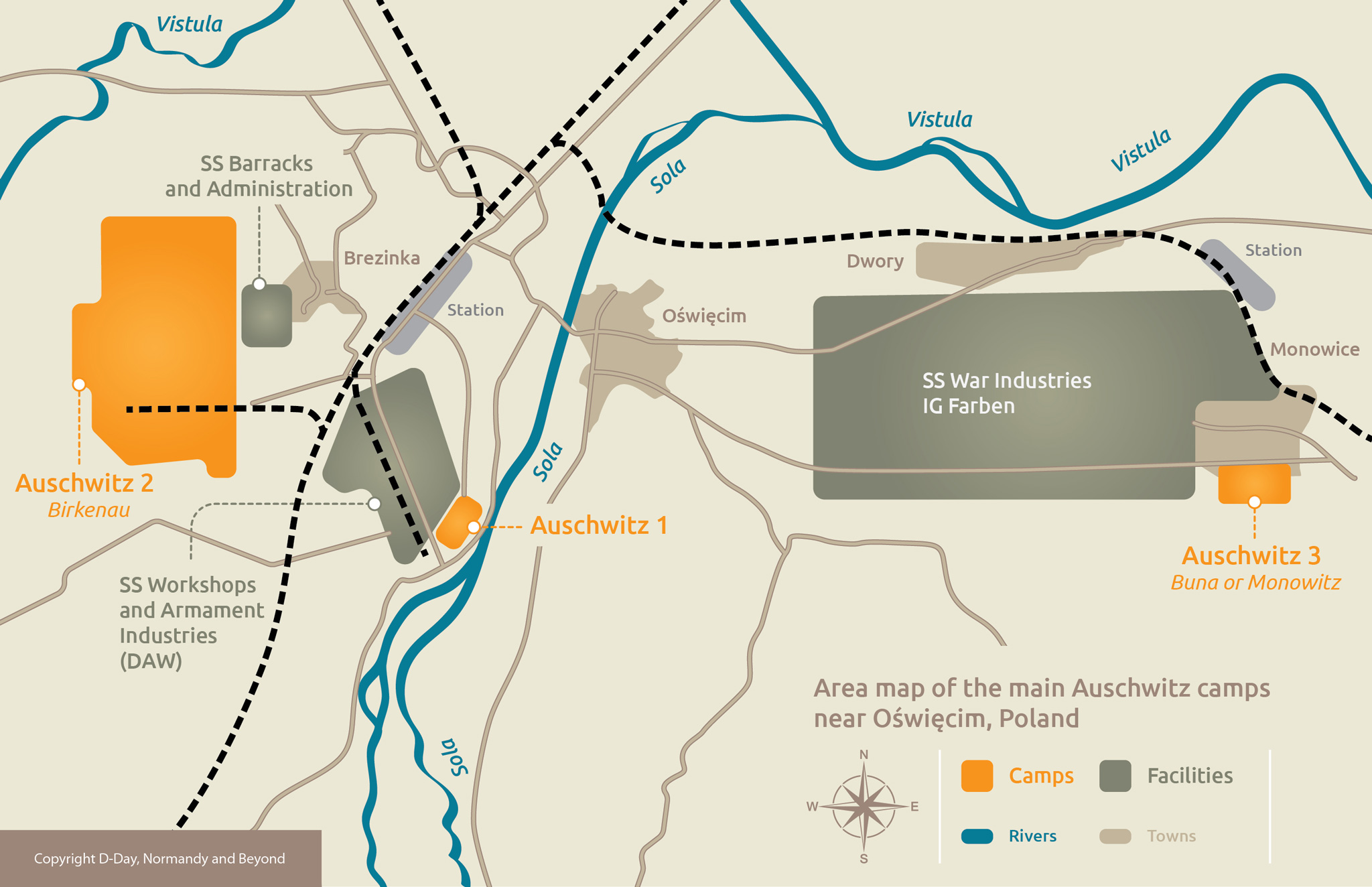
How did prisoners die in Auschwitz?
Prisoners in Auschwitz died in a variety of ways, including gas chambers, forced labor, starvation, brutal treatment, disease, and medical experiments.
Most of the prisoners died in the gas chambers at Auschwitz - Birkenau. The first experiment of gassings of Soviet and Polish prisoners had taken place in block 11 of Auschwitz I (or stammlager) back in late August 1941. It was carried out by deputy camp commandant Hauptsturmführer SS Karl Fritzsch who experimented with Zyklon-B. Zyklon B (The B stands for the German word Blausäure which means hydrogen cyanide) was a pesticide initially used in the concentration camps for delousing clothes and to fight typhus outbreaks. Zyklon B was supplied by the German companies Degesch (Deutsche Gesellschaft für Schädlingsbekämpfung GmbH) and Tesch & Stabenow, under license from patent holder IG Farben.
Those who were not gassed, died of starvation, exhaustion, disease, torture, individual executions, severe beatings or were killed during medical experiments by SS dotors such as Professor Carl Clauberg (researching sterilization), SS-Hauptsturmführer Dr. Josef Mengele M.D. Ph. D. (mostly researching twin physiology and dwarfism) SS-Sturmbannführer Dr. Horst Schumann (sterilization experiments) and Professor of anatomy SS-Obersturmführer Johann Paul Kremer (effects of starvation) to name a few.
Did people escape from Auschwitz?
Yes they did. Around 802 prisoners tried to escape, 144 successfully and on 7 October 1944, two Sonderkommando units (prisoners who operaetd the gaschambers and crematoria) launched an unsuccessful uprising.
Liberation of Auschwitz
As the Soviet Red Army approached Auschwitz in January 1945, the SS evacuated most of the prisoners on a death march to other concentration camps. The Soviet troops liberated the camp on January 27, 1945, which is now commemorated as International Holocaust Remembrance Day. In the following decades, survivors such as Primo Levi, Viktor Frankl, and Elie Wiesel wrote about their experiences and Auschwitz became a symbol of the Holocaust. The Auschwitz-Birkenau State Museum was founded in 1947 on the site of the camp, and it was designated a World Heritage Site by UNESCO in 1979.
Aftermath
Around 789 SS personel (no more than 15 percent) ever stood trial. Just a few, including camp commandant Rudolf Höss, were executed. The Allies' failure to act on early reports of atrocities in the camp by bombing it or its railways remains controversial to this day.
Original video footage
Camp nickname:
Arbeit macht frei
The camp specifications
May 1940 – January 1945
± 1.3 million
± 1.1 million

322nd Rifle Division Red Army
Liberated on: 27th January 1945
"None of us who entered the camp had any warning what so ever of what we were about to see".
Camp commmanders

Rudolf Höss

Arthur Liebehenschel
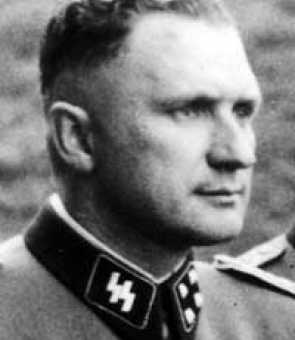
Richard Baer

Friedrich Hartjenstein

Josef Kramer

